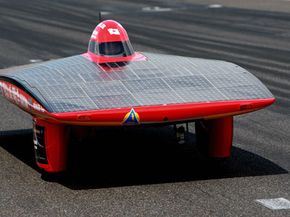Solar-powered Vehicles
Solar power is currently being used to power some cars. Each year, various organizations hold solar challenges, like the North American Solar Challenge (NASC) and the World Solar Challenge. These challenges host teams of future engineers that build and race solar-powered cars. The teams come from various colleges and universities around the world.
The cars, however, don't look like anything on the road today. For one, they are long, wide and very flat. This allows them to run with minimal wind resistance while also having plenty of space for their solar cells. Even though the vehicle dimensions are large, there's typically only enough space for one person. This is to reduce the overall weight of the vehicle. They may be unconventional, but these solar-powered projects really do work.
Advertisement
In the American Solar Challenge events, the cars race across the United States and Canada; in the World Solar Challenge events, they race across the Australian outback. The cars can reach speeds up to 50 mph (80 km/h) as they cross the entire continent without using a drop of fuel. But, for the most part, these challenges are only engineering exercises. That is, they're held simply to learn about various aspects of solar power and car design, not to ready the technology for production.
On the next page, we'll see what automakers have learned from these solar races, and find out why there isn't a solar-powered car parked in your driveway right now.
